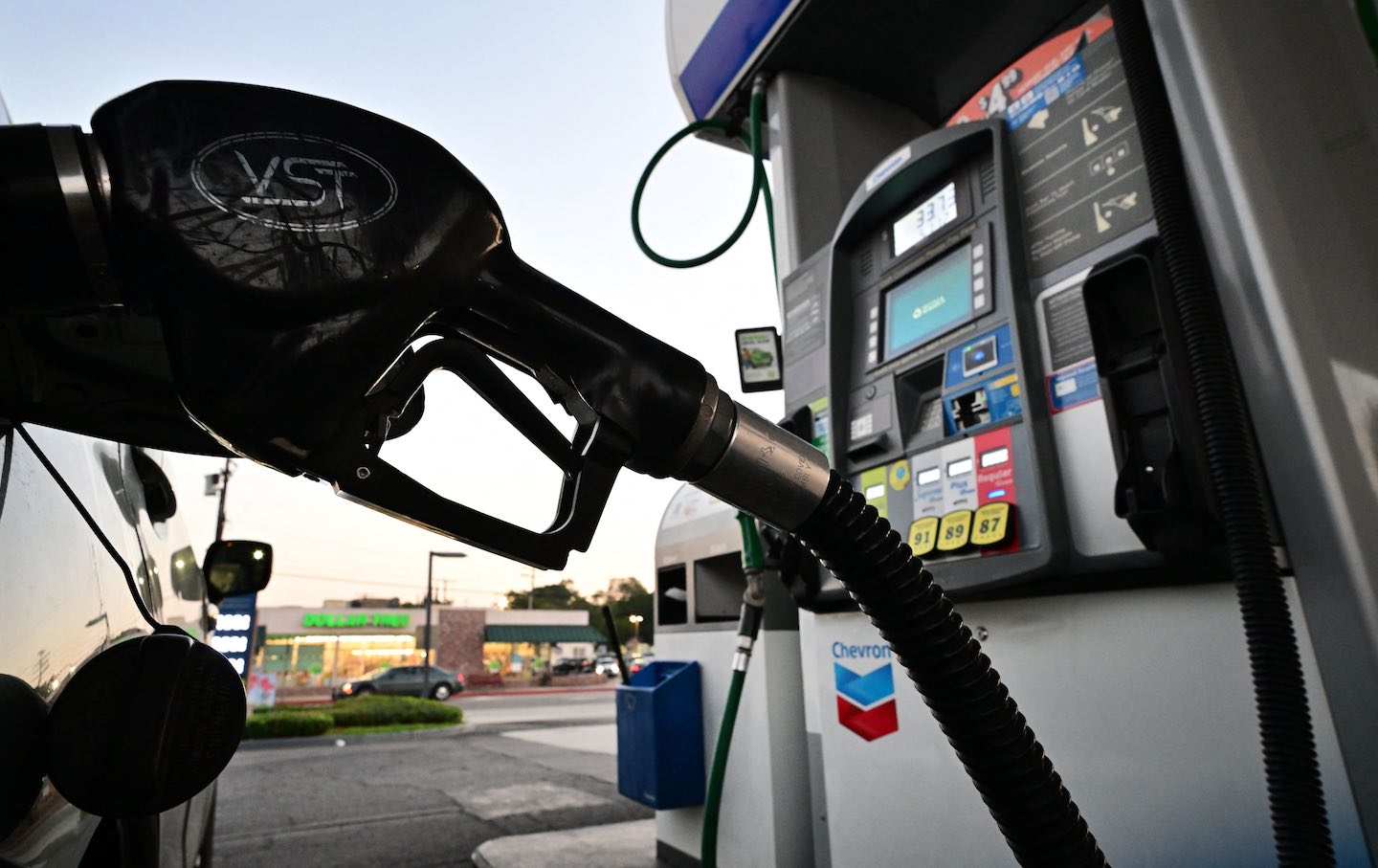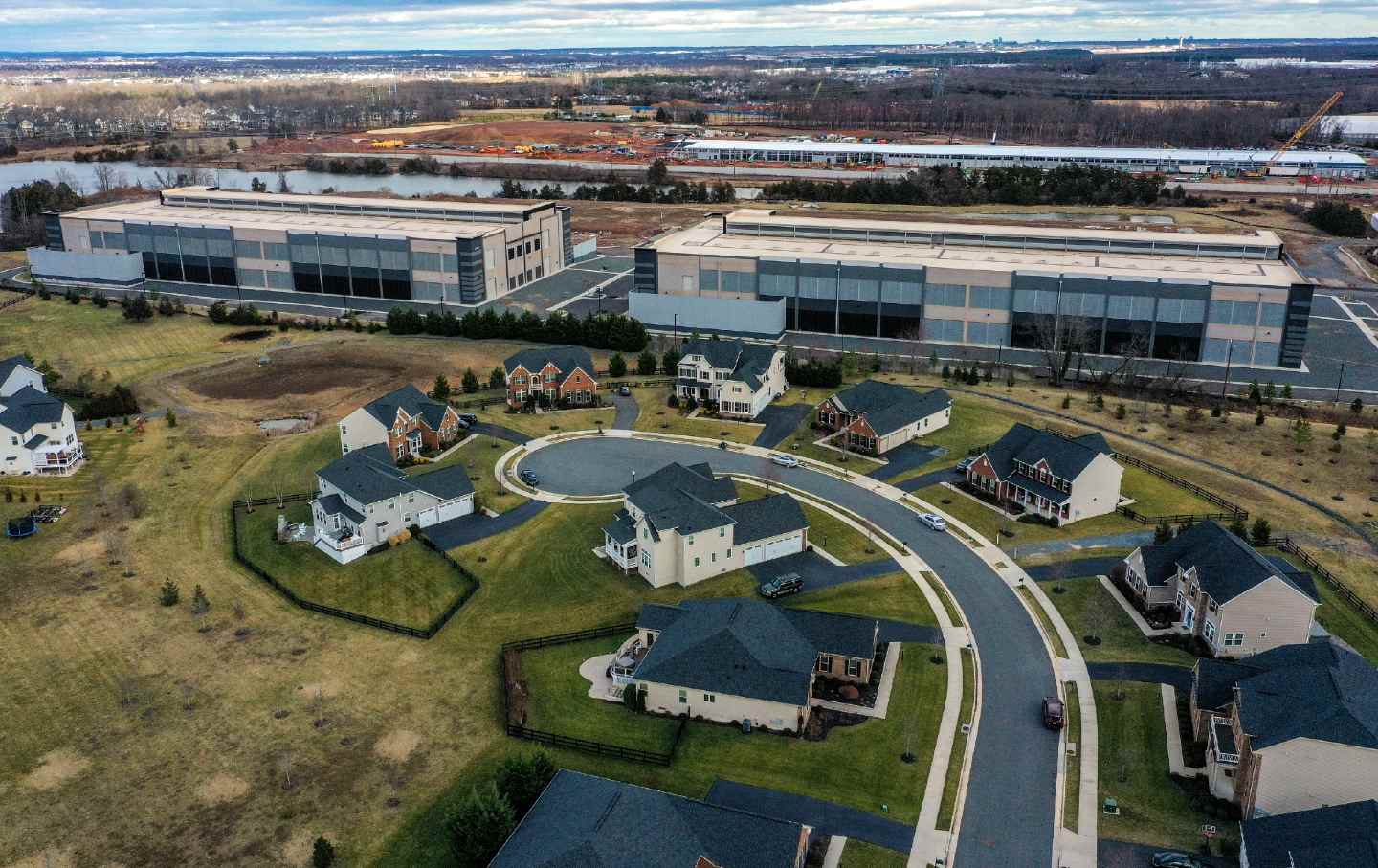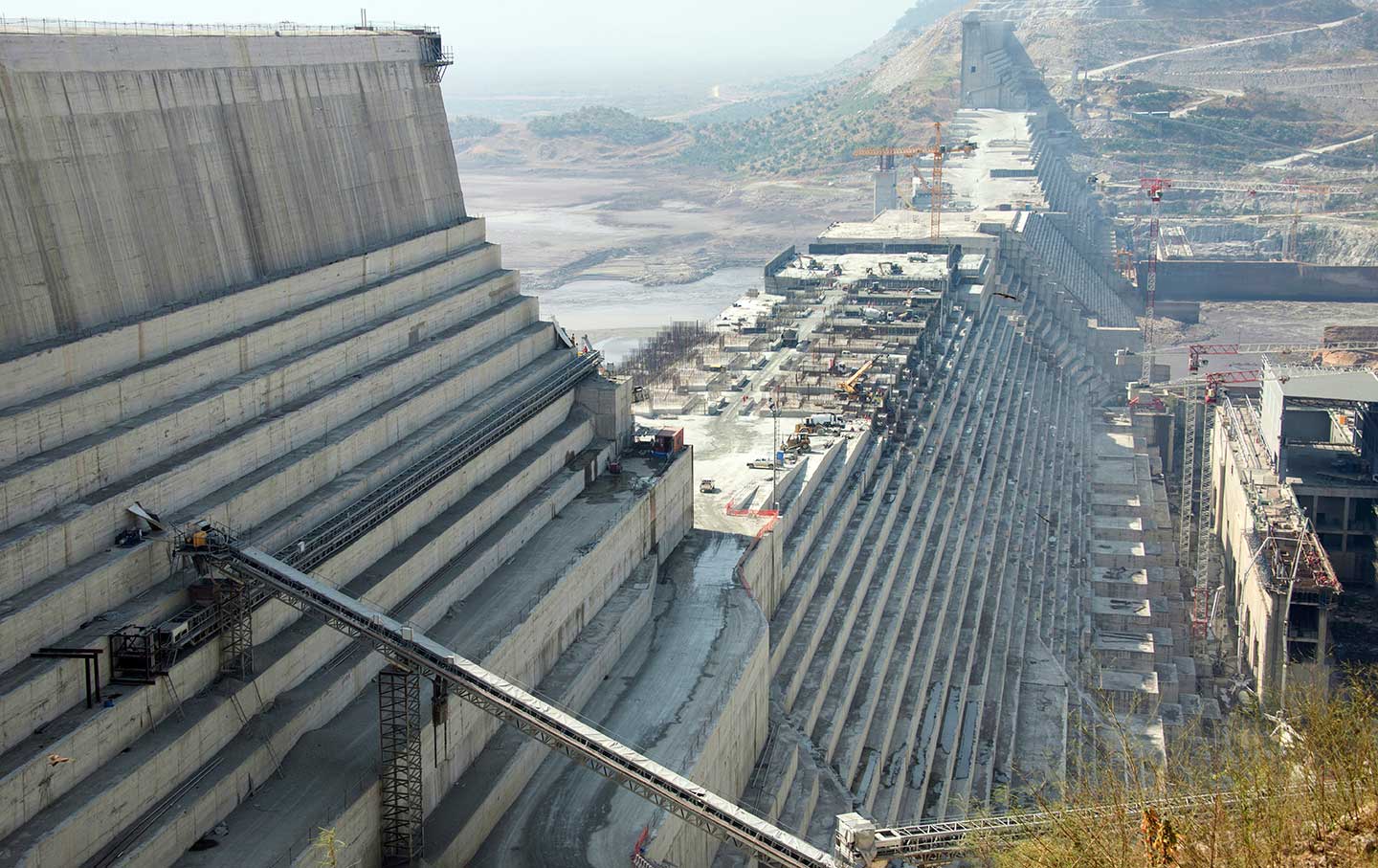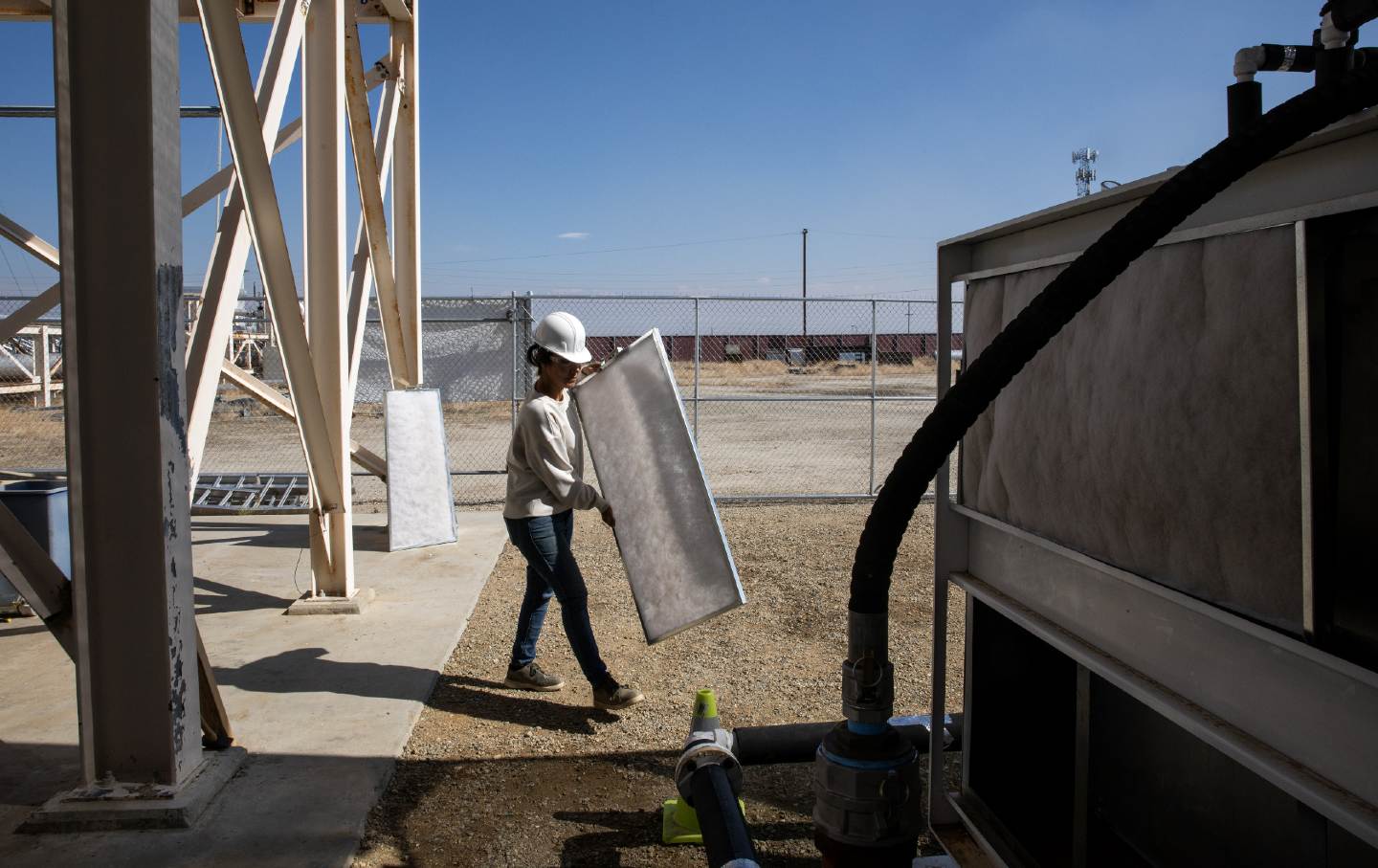[ad_1]
April 1, 2024
Why the “White Gold Rush” is not going to save this planet.

This text initially appeared at TomDispatch.com. To remain on prime of essential articles like these, signal as much as obtain the newest updates from TomDispatch.com.
Along with his good tan and slicked-back hair, California Governor Gavin Newsom stood at a podium at Sacramento’s Cal Expo in late September 2020 and introduced an govt order requiring all new passenger automobiles bought within the state to be zero-emissions by 2035. With the worldwide Covid pandemic then at its peak, Newsom was struggling to inject a little bit of hope into the longer term, emphasizing that his order would show an important step within the battle in opposition to local weather change whereas serving as a serious boon to the state’s economic system. Later approved by the California Air Sources Board, his order is now being reviewed by the Environmental Safety Company. For his half, President Biden has moved to tighten laws on tailpipe exhaust, a not-so-subtle means of pushing automotive producers to go electrical.
As Newsom said shortly earlier than signing his order on the hood of a vivid purple electrical Ford Mustang Mach-E:
“Our vehicles shouldn’t make wildfires worse and create extra days crammed with smoky air. Vehicles shouldn’t soften glaciers or elevate sea ranges threatening our cherished seashores and coastlines.… That is the following large world business, and California desires to dominate it. And that’s in detoxifying and decarbonizing our transportation fleets…. And so at present, California is making a giant, daring transfer in that path.”
One stereotype about Californians is true: We do drive rather a lot, which additionally means we purchase quite a lot of new vehicles. California is, actually, the highest vendor of latest automobiles in the US, with greater than 1.78 million vehicles and vans rolling off its heaps in 2023. In complete, considerably greater than 14 million automobiles are registered within the state, almost the identical number as in Florida and Texas mixed. So Newsom is undoubtedly proper that ridding our roads of combustion engines will considerably cut back the state’s local weather toll. In spite of everything, California’s transportation sector alone is liable for greater than 40% of its greenhouse fuel emissions.
On the floor, Newsom’s govt order seems all too mandatory, certainly important, if using fossil fuels is to someday be eradicated and local weather change mitigated. California can also be residence to more than 50 electrical car producers, and automotive corporations that don’t get on board will quickly discover themselves “on the mistaken aspect of historical past,” as Newsom warned. “They usually’ll need to recuperate economically, not simply recuperate when it comes to having the ability to look their youngsters and grandkids within the eyes.”
Present Challenge

Underpinning the governor’s formidable objective of an all-electric future is one other actuality. Whereas we might change the sorts of vehicles we drive, we gained’t change our life to suit a climate-challenged future. Hundreds of thousands upon hundreds of thousands of latest zero-emission automobiles shall be required and to create them, we’ll want staggering quantities of sources which can be nonetheless lodged under the earth’s crust. On common, a single battery in a small electrical automotive at present accommodates eight kilograms (17.5 kilos) of lithium, or “white gold.” To place that in perspective, if Californians proceed to buy automobiles on the identical tempo as in 2023, the quantity of lithium required will exceed 113 million kilograms (249 million kilos) yearly going ahead.
That’s a mountain of lithium and an terrible lot of mining will must be finished to make the governor’s plan a actuality. And thoughts you, these figures are lowball estimates—a Tesla Mannequin S battery wants 62.6 kilograms of lithium, as an illustration—and so they don’t handle the extra mining electrical automobiles will demand to provide appreciable quantities of cobalt (14 kilograms), manganese (20 kilograms), and copper (upwards of 80 kilograms) per automotive. Newsom is appropriate: Ridding California’s sprawling freeways of gas-guzzlers is a necessity and also will be extremely worthwhile, particularly for the extraction business. However, it’s going to include vital cultural and environmental prices that have to be accounted for.
A Lithium Bonanza
It’s a scorching scorching afternoon in the midst of August and I’m heading west on State Route 293 by means of Humboldt County in northern Nevada. I’m just some miles south of the place the Thacker Move lithium mine operation has damaged floor. The terrain, managed by the Bureau of Land Administration (BLM), a part of the Division of the Inside, is sparse and huge. The sky is cloudless, the soil bone-dry. I go a coyote scampering by means of the sagebrush. Within the distance, the Montana Mountains rise above the flats, casting a protracted shadow. Whereas dramatically serene, this panorama, positioned in the midst of the McDermitt Caldera, together with its nearly boundless lithium deposits, holds a hauntingly shameful historical past.
On September 12, 1865, American troopers carried out a bloodbath of the Numu (Northern Paiute) close to Thacker Move. Natives name the realm “Peehee mu’huh,” or “rotten moon,” to honor the victims. Because the story goes, Indigenous Numu had been being hunted by the first Nevada Cavalry and determined to cover out close to Thacker Move. Dozens of them, together with girls and youngsters, had been finally discovered and slaughtered.
An article within the September 30, 1865, version of The Owyhee Avalanche detailed the carnage. “A cost was ordered and every officer and man went for scalps, and fought the scattering devils over a number of miles of floor for 3 hours, through which time all had been killed that could possibly be discovered.” In all, 31 our bodies had been positioned, however “extra should have been kill[ed] and died from their wounds, as a strict search was not made and the extent of the battlefield so nice.”
Right this moment, descendants of the bloodbath victims are nonetheless preventing to designate Thacker Move and the encompassing space as a memorial site within the Nationwide Register of Historic Locations. By doing so, they hope the bulldozers shall be compelled to close off their engines and lithium mining will stop. In 2021, federal choose Miranda Du rejected their plea, noting that the proof they introduced was “too speculative” to cease the corporate, Lithium Americas, from prospecting there. Within the years since then, the protesters have encountered vital setbacks however have refused to stop.
“All of the folks right here on the reservation weren’t consulted when this mine was authorised,” says Dorece Sam, a descendant of Ox Sam, considered one of solely three survivors of the bloody 1865 bloodbath at Thacker Move. Together with six others, he’s presently being sued by Lithium Nevada Corp. (a subsidiary of Lithium Americas) for protesting the mine. “Myself as an Ox Sam descendant, it means rather a lot to me to know and watch…because the grounds change into an increasing number of desecrated. It’s arduous to see and arduous to observe.”
Lithium Americas pitched its plan to the BLM in 2019 and broke floor at Thacker Move in March 2023. Native tribes and environmental teams have argued in varied courtroom proceedings that the BLM rushed its environmental evaluation with out correctly consulting the tribes within the approval course of. The Ninth Circuit Courtroom of Appeals shot down their best-chance lawsuit in July.
In a earlier 2023 ruling, a decrease courtroom said that the BLM had certainly violated federal legislation by approving the mine since Lithium Americas hadn’t demonstrated its rights to the 1,300 acres it might, sooner or later, bury in waste rock from its mining. Regardless of that acknowledgment, presiding Choose Du did not revoke the corporate’s permits.
“Our hearts are heavy listening to the choice that Choose Du didn’t revoke the permits for the Thacker Move Lithium Mine. Indigenous folks’s sacred websites shouldn’t be on the expense of the local weather disaster the U.S. faces. Destroying Peehee Mu’huh is like cultural genocide,” said the Folks of Purple Mountain, Indigenous Land and Tradition protectors, following Du’s determination.
The “Proper” to Mine
Whereas the courts dominated in favor of the Bureau of Land Administration’s audit, few are disputing that the Thacker venture may have a deleterious influence on the area. For one factor, when the mine is up and working, it’s going to want an exorbitant quantity of groundwater for its operations. An estimated 1.7 billion gallons sucked from the Quinn River Valley, an already overburdened aquifer, should be pumped into the mine yearly. Opponents of the venture additionally notice that chemical compounds used within the lithium extraction course of may leach into groundwater provides, polluting close by creeks, residence to the already threatened Lahontan cutthroat trout. The Thacker basin can also be a vibrant wildlife hall for pronghorn antelope, mule deer, and residential to the only largest sage-grouse inhabitants in Nevada.
In complete, the Thacker Move mine, the biggest recognized lithium deposit on this nation, may someday eat up greater than 17,000 acres of public lands, greater than half the dimensions of San Francisco. It’s set to be the biggest lithium mine within the nation, churning out as many as 40,000 metric tons yearly, sufficient to energy 800,000 electrical automobiles. Inevitably, Thacker will make Lithium Americas’ shareholders very wealthy, bringing them an estimated nearly $4 billion as soon as all of the recoverable lithium is extracted. Nonetheless, that projection, from 2021, was based mostly on the worth of lithium when it bought for a median of $12,600 per ton. By 2023, a ton of lithium was promoting for round $46,000.
Promising that the mine will energy its all-electric-vehicle future, Normal Motors now holds unique rights to the lithium the mine will extract and has invested $650 million in it. President Biden’s Division of Power can also be all in, loaning $2.26 billion to Lithium Americas to jump-start the venture.
Fashionable
“swipe left under to view extra authors”Swipe →
The Thacker Move lithium mine is however considered one of many examples of the best way Native lands have been and proceed to be exploited. The 1872 Mining Act and the Dawes Act of 1887 have lengthy permitted the federal authorities to stake claims to tribal lands with out their consent.
“The Mining Regulation permits United States residents and corporations to probe for minerals and set up rights to federal lands with out authorization from any authorities company. This provision, often called self-initiation or free entry, is the cornerstone of the Mining Regulation,” reads a report on that legislation by Lawrence College economics professor David Gerard. “If a web site accommodates a deposit that may be profitably marketed, claimants benefit from the ‘proper to mine,’ no matter any various use, potential use, or non-use worth of the land.”
The Dawes Act went even additional, permitting the federal authorities to divide tribal lands into smaller parcels that could possibly be bought off to particular person patrons, a part of a sinister scheme to delegitimize Native sovereignty on lands that had been stolen from them within the first place.
“It served the bigger objective as a result of the bigger objective was twofold: to make us extra like white folks or destroy us and get massive quantities of land out of Native management and into the fingers of particular person, non-Native residents,” says Kelli Mosteller, director of the Citizen Potawatomi Nation Cultural Heritage Middle. “The Dawes Act solidified as soon as once more the mistrust that has settled in about coping with the federal government. Each time the federal government is available in and asks for one thing, there’s at all times that ulterior motive.”
The mine at Thacker Move, which can find yourself slicing a gash within the earth a mile large and a pair of.3 miles lengthy, is simply the newest instance of an unsightly legacy of ravaging former Native lands for revenue.
“Are we nonetheless in a scenario the place the wealthy get wealthy and the tribes get poorer as a result of they don’t get a dime off of the mining that occurs inside their unique lands? That’s arduous to swallow,” says Arlan Melendez, chair of the Reno-Sparks Indian Colony.
Going Again to California
A big underground lithium deposit has additionally been found close to the south finish of California’s dilapidated and toxic Salton Sea, as soon as a playground for Hollywood’s elite. Whereas it’s not almost as massive because the one at Thacker Move, estimates put the extractable deposits of lithium at upwards of 18 million metric tons, sufficient to finally fill 380 million electrical car batteries.
In fact, digging out all that smoldering “white gold” will come at a price there, too, not simply economically however environmentally. What these results shall be, precisely, has but to be revealed. Even so, Governor Newsom made his method to the Imperial Valley and the Salton Sea, a area he hopes is likely to be remodeled right into a hub for electrical battery manufacturing and that he’s smugly branded “Lithium Valley.”
“California is poised to change into the world’s largest supply of batteries, and it couldn’t come at a extra essential second in our efforts to maneuver away from fossil fuels,” said Newsom. “The long run occurs right here first—and Lithium Valley is fast-tracking the world’s clear power future.”
How clear that future shall be stays to be seen. Right here’s one factor to contemplate, although: Irrespective of how this all seems, Newsom’s electrified imaginative and prescient of the longer term doesn’t imply fewer automobiles on the highway or a discount in America’s power consumption. The California governor isn’t about to problem the tenets of world capitalism that, with a major serving to hand from world warming, are already driving us towards the brink of ecological collapse. In all too some ways, at the very least as now deliberate, extra mining, even of lithium, will imply not a brand new world however an all-too-grim continuation of the established order. The important thing distinction is that this time round, it’s going to include a “inexperienced” stamp of approval.
In different phrases, regardless of the horrors of local weather change, the current method to fixing it, whether or not by mining for lithium within the Salton Sea or dredging up the spirits of Thacker Move, is deeply problematic. So long as each single factor on this planet stays a commodity to be exploited for revenue, whether or not labor or pure sources, humanity will stay in disaster. If we proceed as deliberate down this violent and bumpy highway forward, we might (or might not) save our imperiled local weather, however one factor is definite: Our little planet shall be left in ruins, whereas the rich velocity off of their Teslas.
Thanks for studying The Nation!
We hope you loved the story you simply learn. It’s simply considered one of many examples of incisive, deeply-reported journalism we publish—journalism that shifts the needle on essential points, uncovers malfeasance and corruption, and uplifts voices and views that usually go unheard in mainstream media. For almost 160 years, The Nation has spoken reality to energy and shone a light-weight on points that will in any other case be swept underneath the rug.
In a essential election yr in addition to a time of media austerity, unbiased journalism wants your continued assist. One of the simplest ways to do that is with a recurring donation. This month, we’re asking readers such as you who worth reality and democracy to step up and assist The Nation with a month-to-month contribution. We name these month-to-month donors Sustainers, a small however mighty group of supporters who guarantee our staff of writers, editors, and fact-checkers have the sources they should report on breaking information, investigative characteristic tales that usually take weeks or months to report, and way more.
There’s rather a lot to speak about within the coming months, from the presidential election and Supreme Courtroom battles to the battle for bodily autonomy. We’ll cowl all these points and extra, however that is solely made potential with assist from sustaining donors. Donate at present—any quantity you’ll be able to spare every month is appreciated, even simply the worth of a cup of espresso.
The Nation does now bow to the pursuits of a company proprietor or advertisers—we reply solely to readers such as you who make our work potential. Arrange a recurring donation at present and guarantee we are able to proceed to carry the highly effective accountable.
Thanks on your generosity.

Extra from The Nation

Geologists might have voted down formal recognition of the Anthropocene as a geological epoch, however we nonetheless have to act to forestall ecological disaster.
Leigh Phillips

There might by no means be one other Flaco, however there shall be different birds within the metropolis to like. Could we take higher care of them.
Joan Walsh

Northern Virginia is grappling with the environmental results of a booming data-center empire.
Ella Fanger

The dispute over Ethiopia’s monumental dam must be a warning of what the longer term holds on a warmer, drier planet.
Joshua Frank

On the Cleantech North America convention, the fates of climate-tech start-ups are tangled into the stability sheets of corporations who induced the disaster within the first place.
Molly Taft
[ad_2]